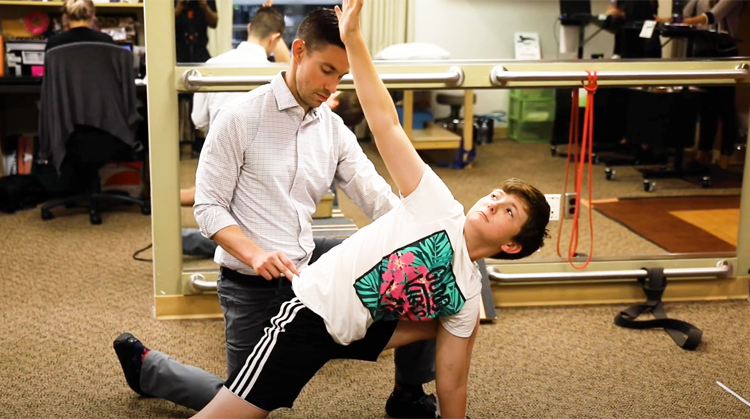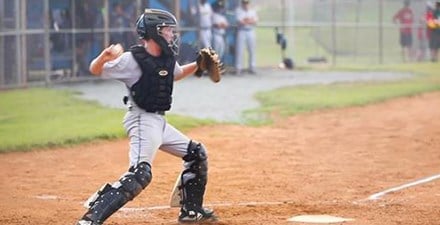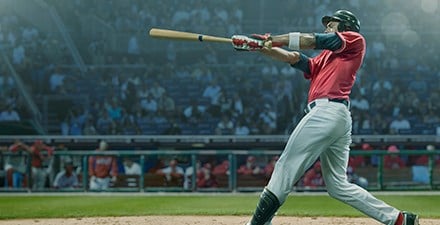Physical Therapy Guide to Little League Shoulder (Proximal Humeral Epiphysitis)
Little league shoulder is an overuse injury often seen in young athletes. The condition also is called proximal humeral epiphysitis. It affects the upper part of the throwing arm, just below the shoulder. This is where the growth plate for the humerus (the upper arm bone) is located. Little league shoulder is most common in young baseball players. It also can occur in any young athlete who performs repeated overhead activities such as during tennis, volleyball, and swimming. Playing highly competitive sports, a single sport year-round, and working with professional pitching coaches may have led to the recent increase in little league shoulder.
Shoulder and elbow injuries in young athletes are common. Research shows around 15% of athletes experience shoulder pain in their throwing arm. Physical therapists partner with orthopedists or sports medicine doctors to develop treatment and rehabilitation programs to help young athletes with little league shoulder. Physical therapists analyze throwing mechanics, evaluate muscle strength and movement patterns, and identify areas of restriction or muscle weakness. They develop treatment plans to help athletes return pain free to their sport.
Physical therapists are movement experts. They improve quality of life through hands-on care, patient education, and prescribed movement. You can contact a physical therapist directly for an evaluation. To find a physical therapist in your area, visit Find a PT.
What Is Little League Shoulder?
Little league shoulder is primarily seen in maturing children with open growth plates. Growth plates are typically found in the long bones of the body. The condition results from repeated stress to the shoulder region. Normally the body responds to pulling and stretching forces by healing any stressed tissue during times of rest in between periods of activity. Young athletes who specialize in a single sport, or who throw or pitch often without proper rest, may develop this condition.
Also, because throwing is a total body movement, lack of muscle strength or poor mechanics can lead to increased stress through the growth plate of the shoulder. This increases an athlete’s risk of injury. This condition is most common in young baseball pitchers. But any young person who throws or uses a racquet repeatedly could be at risk for this injury.
It is very important that the young athlete get the appropriate amount of rest between periods of activity to reduce the amount of strain on the shoulder area.
Signs and Symptoms
With little league shoulder, a young athlete may experience:
- Pain in the shoulder while pitching or throwing.
- Tenderness or swelling over the upper arm.
- Pain when lifting the arm.
- Decreased speed or accuracy when throwing.
How Is It Diagnosed?
Sports medicine or orthopedic doctors diagnose little league shoulder by doing a full physical exam of the entire shoulder area. X-rays of the shoulder will show a widening or abnormal growth plate (area of new bone growth in children and teens). If X-rays are not conclusive, your doctor may order an MRI.
If a child sees a physical therapist first, they will ask the patient and guardian questions such as:
- What is the location of the shoulder pain, and what makes it worse or better?
- What sport and position do you play? How often do you play (number of practices and games in a typical week/month/year)?
- If you are a pitcher, when was the last time you threw a ball? What types of pitches do you typically throw? How much rest do you get between throwing events?
- How long have you been experiencing your current symptoms? When do your symptoms typically occur?
- Have you recently gone through a rapid growth spurt?
After gathering this information, your physical therapist will do a full physical exam. They will identify any factors that may be contributing to your problem. Your physical therapist will examine your shoulder and elbow movement on both sides. They will look for any muscle imbalances or decreased movements (range of motion). They also will test the strength of the muscles used in throwing. These include the muscles around the shoulder blade, trunk, pelvis, and hip. Shoulder injuries often result from movement changes (altered mechanics). These occur when an athlete knowingly or unknowingly changes how they throw to avoid other pain, such as elbow pain.
How Can a Physical Therapist Help?

Physical therapists design a treatment program to address:
- Muscle weakness.
- Lack of endurance.
- Problems with range of motion.
- Poor throwing mechanics.
- Tenderness, soreness, and pain.
A physical therapist will work with the young athlete to:
- Improve flexibility, muscle strength, and endurance of the shoulder and arm muscles.
- Increase core, hip, and leg strength and stability to provide a firm foundation from which to throw.
- Correct pitching mechanics to reduce stress through the shoulder.
- Establish a plan for a controlled return to throwing, to help the athlete progress to a safe return to play. This is often called an interval throwing program.
- Establish a training schedule for the year. This will ensure the proper amount of throwing time and rest based on a child’s age and physical condition.
Your physical therapist will work with you to develop a treatment plan based on your specific condition and goals.
Can This Injury or Condition Be Prevented?
No injury is ever completely preventable. However, there are some steps players, their parents, and coaches can take to reduce the risk of shoulder injury. These include:
Pitch count and rest. The body needs rest to heal itself. Taking days off from playing or practicing gives your body a chance to repair and remain healthy. Your physical therapist will provide age-appropriate guidance for the right amount of pitching and rest needed to keep shoulder strength and health. For example, they likely will recommend maximum pitch counts for game days, and rest and/or a lower number of pitches on the days following a game.
Each young athlete is different. Your physical therapist will tailor recommendations for your age. Major League Baseball’s Pitch Smart USA offers pitch count limits and required rest recommendations to prevent injury for youth and adolescent players up to age 22.
Examples by age include:
Ages 7-8: 50 pitch max on game day, and no more than 20 pitches the day after a game (a rest day). If the athlete rests their arm (throwing between zero to 20 pitches), the athlete can throw up to 35 pitches the day after the rest day. After two days of rest or limited pitching, 36-50 pitches may be thrown.
Ages 9-10: 75 pitch max on game day and no more than 20 pitches the day after a game.
Ages 11-12: 85 pitch max on game day and no more than 20 pitches the day after a game.
It is important to limit the pitch count and get the right amount of rest after competition. This can help to prevent pitching fatigue. A physical therapist can make sure you get the advice and treatment right for your specific age to help you prevent injury, and help you recover from little league shoulder.
Body mechanics. Young athletes should be supervised and monitored while playing sports with repeated overhead motion. Coaches should know what to look for in young throwers. As soon as an athlete shows any signs or symptoms of little league shoulder, consult a sports medicine doctor or physical therapist.
Movement variety. It’s important to expose growing children to many sports and play activities while their muscles and bones develop. They also should play a wide variety of positions within specific sports. This helps reduce the amount of repeated stress placed on any one body region. Parents and coaches should encourage taking part in a variety of sports. Research suggests a link between multisport participation and decreased injury risk.
Prescribed rest. If an athlete develops little league shoulder, they will need to rest from the overhead activity for four to six weeks. This rest will help to ensure they heal properly. A physical therapist can work with an athlete to provide other ways to stay active during the rest and recovery process. Afterward, the physical therapist will work with the athlete on a gradual and safe return to throwing. Rest periods will vary from injury to injury and patient to patient. Your physical therapist will prescribe rest periods right for your condition and goals.
What Kind of Physical Therapist Do I Need?
All physical therapists are prepared through education and experience to treat little league shoulder. However, you may want to consider:
- A physical therapist who is experienced in treating young athletes, and who works closely with a sports medicine doctor or orthopedic surgeon. Some physical therapists have advanced skills or training with an orthopedic or pediatric sports medicine focus. These physical therapists have experience working with competitive athletes.
- A physical therapist who is a board-certified clinical specialist, or who completed a residency or fellowship in sports or pediatric physical therapy. This physical therapist has advanced knowledge, experience, and skills that may apply to your condition.
You can find physical therapists in your area with these credentials and clinical expertise on Find a PT, a tool built by the American Physical Therapy Association.
General tips when you are looking for a physical therapist (or any other health care provider):
- Get recommendations from family, friends, or other health care providers.
- When you contact a physical therapy clinic for an appointment, ask about the physical therapists' experience in helping people who have little league shoulder.
- Be prepared to describe your symptoms in as much detail as possible during your first visit. Make a note of what makes your symptoms better or worse.
The APTA Academy of Pediatric Physical Therapy contributed to this consumer resource. It is for informational purposes only and is not intended to represent the position of APTA Pediatrics.
The American Physical Therapy Association believes consumers should have access to information to help them make informed health care decisions and prepare them for their visit with a health care provider.
The following resources offer some of the best scientific evidence related to physical therapy treatment for little league shoulder. This condition also may be referred as proximal humeral epiphysitis, epiphysiolysis, osteochondrosis of the proximal humeral epiphysis, Salter Harris Type I fracture, stress fracture of the proximal humerus, apophysitis, and epiphysitis. These articles report recent research and give an overview of the standards of practice both in the United States and internationally. They link to a PubMed* abstract that also may offer free access to the full text, or to other resources. You can read them or print out a copy to bring with you to your health care provider.
Casadei K, Kiel J. Proximal Humeral Epiphysiolysis. Treasure Island, FL: StatPearls Publishing; 2021. https://www.ncbi.nlm.nih.gov/books/NBK534301. Accessed April 29, 2021.
V Singh. The Baseball Guide. Little League Pitching Rules for 2020 {Everything You Need}. Posted March 11, 2020.
Heyworth BE, Kramer DE, Martin DJ, Micheli LJ, Kocher MS, Bae DS. Trends in the presentation, management, and outcomes of little league shoulder. Am J Sports Med. 2016;44(6):1431–1438. Article Summary on PubMed.
Yang J, Mann B, Guettler J, et al. Risk-prone pitching activities and injuries in youth baseball. Am J Sports Med. 2014;42(6):1456–1463. Article Summary on PubMed.
DiFiori JP, Benjamin HJ, Brenner JS, et al. Overuse injuries and burnout in youth sports: a position statement from the American Medical Society for Sports Medicine. Br J Sports Med. 2014;48(4):287–288. Article Summary on PubMed.
Pitch Smart USA. Pitching guidelines. Guidelines for youth and adolescent pitchers. MLB Advanced Media.
*PubMed is a free online resource developed by the National Center for Biotechnology Information. PubMed contains millions of citations to biomedical literature, including citations in the National Library of Medicine’s MEDLINE database.
Expert Review:
Jul 10, 2021
Revised:
Jul 10, 2021
Content Type: Guide
Little League Shoulder
PT, DPT, board-certified clinical specialist in pediatric and orthopedic physical therapy
Michael Breneman
PT, DPT, board-certified clinical specialist in orthopedic physical therapy
You Might Also Like...
Video
Physical Therapy for What Moves You: BaseballOct 28, 2019
Mac is 12 years old and the starting catcher for his travel baseball team. A shoulder injury moved him to the bench. Physical therapy helped him recover
Podcast
Avoiding Baseball InjuriesMay 6, 2014
Former Los Angeles Dodgers head physical therapist and trainer Sue Falsone discusses how professional baseball players endure the rigors of a long

